#Tiarella
Text

Tiarella cordifolia / Heart-Leaved Foamflower at the Sarah P. Duke Gardens at Duke University in Durham, NC
#Tiarella cordifolia#Tiarella#Saxifragaceae#Heart-leaved Foamflower#Heart leaved Foamflower#Foamflower#Allegheny Foamflower#False miterwort#Coolwort#Native plants#Native flowers#Plants#Flowers#Nature photography#photographers on tumblr#Sarah P. Duke Gardens#Duke Gardens#Duke University#Durham#Durham NC#North Carolina
8 notes
·
View notes
Photo

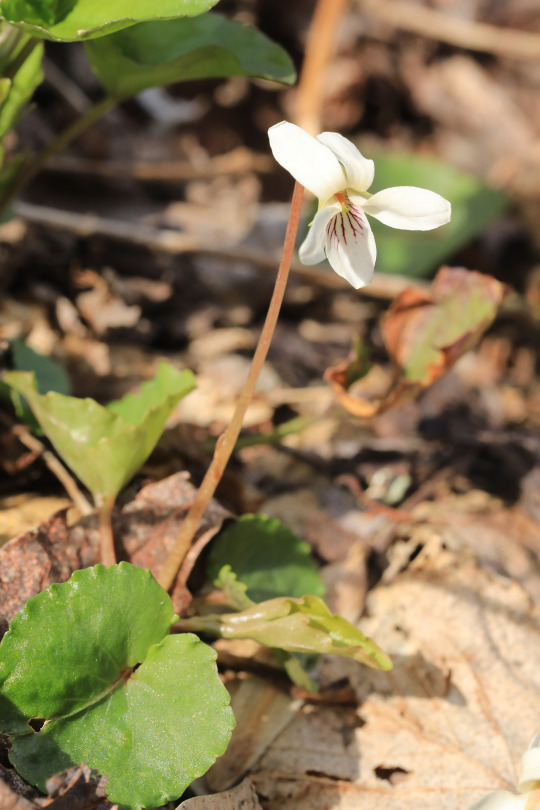
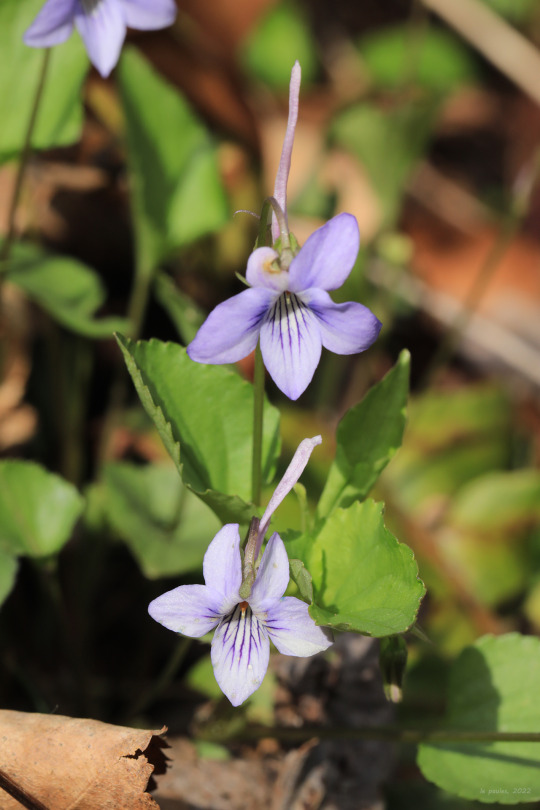
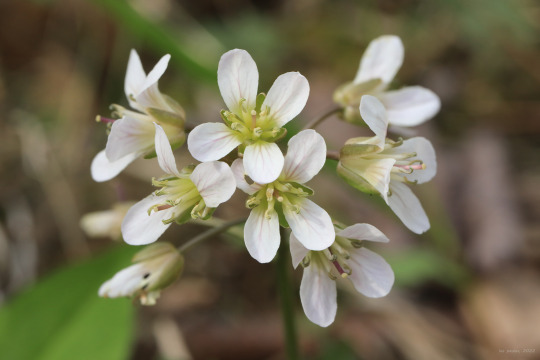
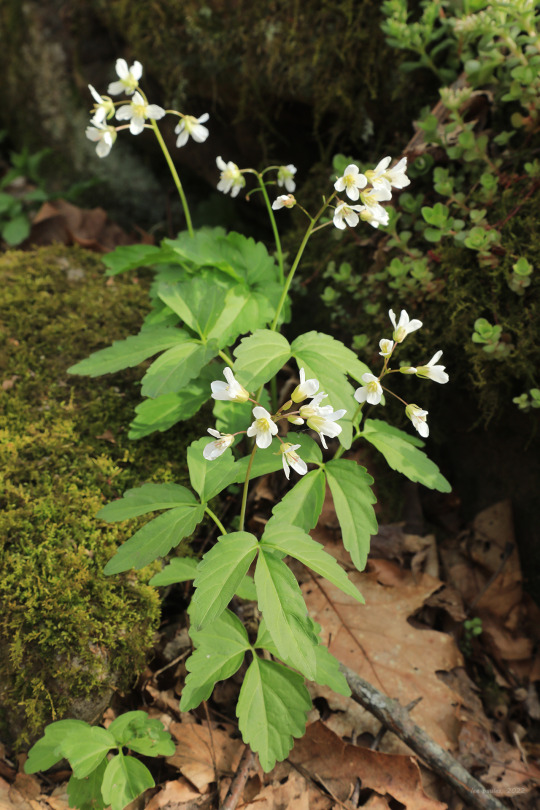


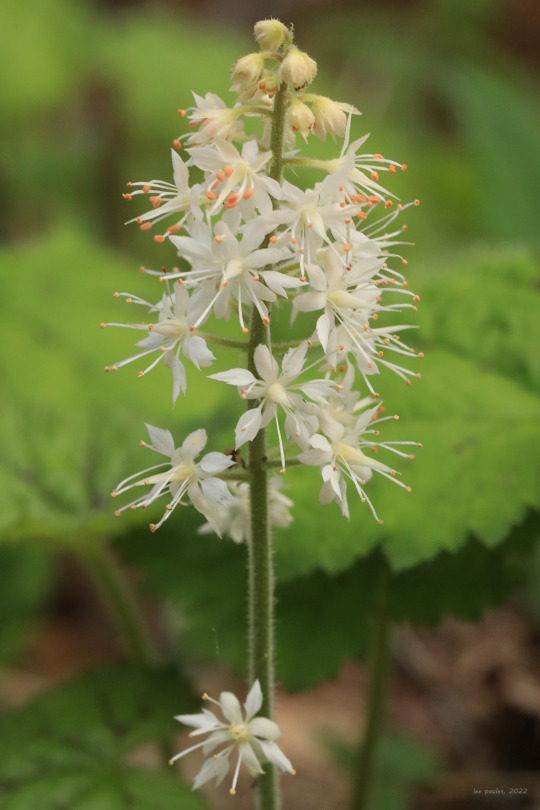
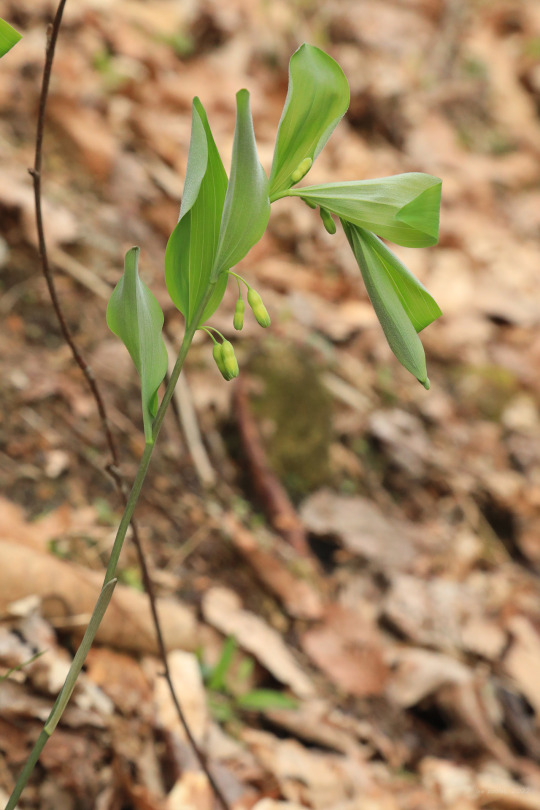
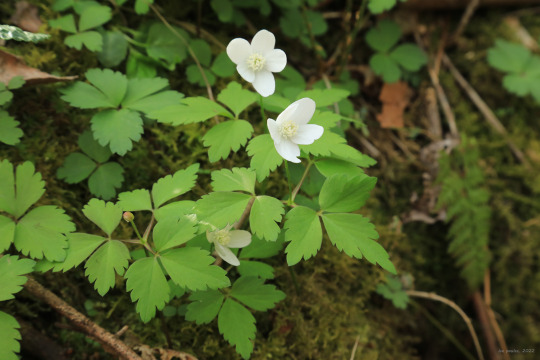
Early May in an Appalachian forest.
From top: sweet white violet (Viola blanda); long-spurred violet (Viola rostrata); broadleaf toothwort (Cardamine diphylla); wake robin (Trillium erectum), also known as red or purple trillium; heartleaf foamflower (Tiarella cordifolia); smooth Solomon’s seal (Polygonatum biflorum); and wood anemone (Anemone quinquefolia), also known as nightcaps.
#appalachia#vandalia#west virginia#spring#flora#wildflowers#viola blanda#sweet white violet#viola rostrata#long-spurred violet#cardamine diphylla#broadleaf toothwort#trillium erectum#wake robin#red trillium#purple trillium#tiarella cordifolia#heartleaf foamflower#polygonatum biflorum#smooth solomon's seal#anemone quinquefolia#wood anemone#nightcaps#coopers rock state forest
1K notes
·
View notes
Text

i think Tiarella trifoliata but not actually sure
3 notes
·
View notes
Text

The foam flower (Tiarella cordifolia) is a perennial plant that prefers moist, well-drained soil and requires partial to full shade. Watering should be consistent, keeping the soil evenly moist but not waterlogged. This plant is native to the eastern United States, including the Appalachian Mountains. Ideal for woodland or rain gardens, this plant will produce the delicate, foam-like flowers of its namesake in late spring to early summer.
#foam flower#tiarella cordifolia#perennial#native plants#woodland#woodland garden#rain garden#horticulture#garden#gardening#my garden
0 notes
Text
An App Does Not a Master Naturalist Make
Originally posted on my website at https://rebeccalexa.com/app-not-master-naturalist/ - I had written this as an op-ed and sent it to WaPo, but they had no interest, so you get to read it here instead!
I have mixed feelings about Michael Coren’s April 25 Washington Post article, “These 4 free apps can help you identify every flower, plant and tree around you.” His ebullience at exploring some of the diverse ecological community around him made me grin, because I know exactly what it feels like. There’s nothing like that sense of wonder and belonging when you go outside and are surrounded by neighbors of many species, instead of a monotonous wall of green, and that is a big part of what led me to become a Master Naturalist.
When I moved from the Midwest to the Pacific Northwest in 2006, I felt lost because I didn’t recognize many of the animals or plants in my new home. So I set about systematically learning every species that crossed my path. Later, I began teaching community-level classes on nature identification to help other people learn skills and tools for exploring their local flora, fauna, and fungi.
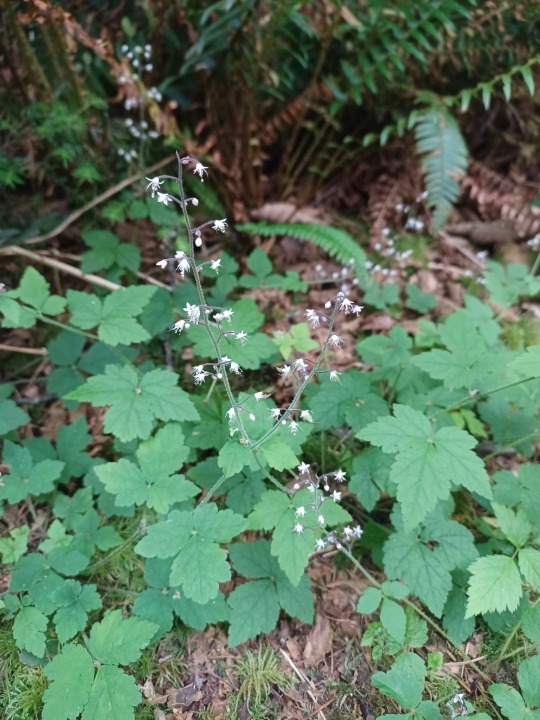
Threeleaf foamflower (Tiarella trifoliata)
Let me be clear: I love apps. I use Merlin routinely to identify unknown bird songs, and iNaturalist is my absolute favorite ID app, period. But these tools are not 100% flawless.
For one thing, they’re only as good as the data you provide them. iNaturalist’s algorithms, for example, rely on a combination of photos (visual data), date and time (seasonal data), and GPS coordinates (location data) to make initial identification suggestions. These algorithms sift through the 135-million-plus observations uploaded to date, finding observations that have similar visual, seasonal, and location data to yours.
There have been many times over the years where iNaturalist isn’t so sure. Take this photo of a rather nondescript clump of grass. Without seed heads to provide extra clues, the algorithms offer an unrelated assortment of species, with only one grass. I’ve gotten that “We’re not confident enough to make a recommendation” message countless times over my years of using the app, often suggesting species that are clearly not what I’m looking at in real life.

Because iNaturalist usually offers up multiple options, you have to decide which one is the best fit. Sometimes it’s the first species listed, but sometimes it’s not. This becomes trickier if all the species that are suggested look alike. Tree-of-Heaven (Ailanthus altissima), smooth sumac (Rhus glabra) and eastern black walnut (Juglans nigra) all have pinnately compound, lanceolate leaves, and young plants of these three species can appear quite similar. If all you know how to do is point and click your phone’s camera, you aren’t going to be able to confidently choose which of the three plants is the right one.

Coren correctly points out that both iNaturalist and Pl@ntNet do offer more information on suggested species—if people are willing to take the time to look. Too many assume ID apps will give an easy, instant answer. In watching my students use the app in person almost everyone just picks the first species in the list. It’s not until I demonstrate how to access the additional content for each species offered that anyone thinks to question the algorithms’ suggestions.
While iNaturalist is one of the tools I incorporate into my classes, I emphasize that apps in general are not to be used alone, but in conjunction with field guides, websites, and other resources. Nature identification, even on a casual level, requires critical thinking and observation skills if you want to make sure you’re correct. Coren’s assertion that you only need a few apps demonstrates a misunderstanding of a skill that takes time and practice to develop properly—and accurately.
Speaking of oversimplification, apps are not a Master Naturalist in your pocket, and that statement —while meant as a compliment–does a disservice to the thousands of Master Naturalists across the country. While the training curricula vary from state to state, they are generally based in learning how organisms interact within habitats and ecosystems, often drawing on a synthesis of biology, geology, hydrology, climatology, and other natural sciences. A Master Naturalist could tell you not only what species you’re looking at, but how it fits into this ecosystem, how its adaptations are different from a related species in another ecoregion, and so forth.
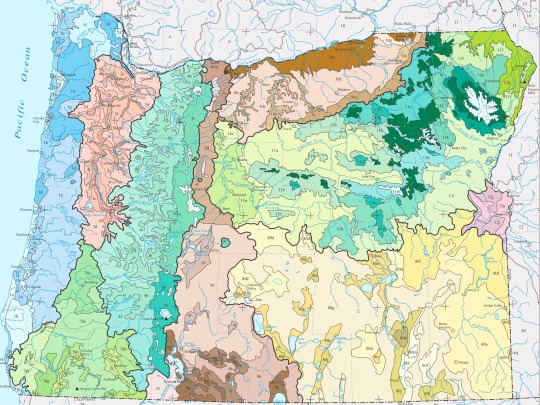
Map showing Level III and IV ecoregions of Oregon, the basis of my training as an Oregon Master Naturalist.
In spite of my criticisms, I do think that Coren was absolutely onto something when he described the effects of using the apps. Seeing the landscape around you turn from a green background to a vibrant community of living beings makes going outside a more exciting, personal experience. I and my fellow nature nerds share an intense curiosity about the world around us. And that passion, more than any app or other tool, is fundamental to becoming a citizen naturalist, Master or otherwise.
Did you enjoy this post? Consider taking one of my online foraging and natural history classes or hiring me for a guided nature tour, checking out my other articles, or picking up a paperback or ebook I’ve written! You can even buy me a coffee here!
#iNaturalist#plant apps#Seek#Merlin#nature#wildlife#plant identification#apps#botany#biology#science#scicomm#science communication#Google Lens#naturalist#Master Naturalist#conservation#environment
617 notes
·
View notes
Text
Night blooming flowers
Flowers for a vampirekin/nocturnalkin garden.
Alyssum ( Lobularia maritima)
Angel’s trumpet (Brugmansia)
Golden angel’s trumpet (Brugmansia aurea)
Peach angel’s trumpet (Brugmansia versicolor)
Red angel’s trumpet (Brugmansia sanguinea)
Salmon angel’s trumpet (Brugmansia vulcanicola)
Brahma kamal lotus (Saussurea obvallata)
Burning hearts (Heliopsis helianthoides var. scabra)
Cape Jasmine (Gardenia jasminoides)
Casablanca Lily (Lilium ‘Casablanca’)
Chinese quince (Chaenomeles speciosa)
Chocolate daisy (Berlandiera lyrata)
Claret cup (Echinocereus triglochidiatus)
Dame’s rocket (Hesperis matronalis)
Drooping red gum (Eucalyptus parramattensis)
Easter lily cactus (Echinopsis oxygona)
Evening primrose (Oenothera biennis)
Evening rain lily (Zephyranthes drummondii)
Flowering tobacco ( Nicotiana alata)
Foamflower (Tiarella cordifolia)
Four o’clocks (Mirabilis jalapa)
Hoary stock (Matthiola incana)
Japanese wisteria (Wisteria floribunda)
Lotus’ (Nelumbo)
Lungwort (Pulmonaria)
Mock Orange (Philadelphus coronaius)
Moonflower (Datura innoxia)
Moon vine (Ipomoea alba)
Night blooming jasmine (Cestrum nocturnum)
Night blooming water lilies (Nymphaea)
Night gladiolus (Gladiolus tristis)
Night phlox (Zaluzianskya capensis)
Night scented orchid (Epidendrum nocturnum)
Night scented stock (Matthiola longipetala)
Nottingham catchfly (Silene nutans)
Opening Night rose (Rosa x ‘Opening Night’)
Queen of the night (Epiphyllum oxypetalum)
Ten-petal blazing star (Mentzelia decapetala)
Tuberose (Agave amica)
1K notes
·
View notes
Text



‘Spring Symphony’
Foamflower
Tiarella Cordifolia
March 22nd, 2024
16 notes
·
View notes
Text



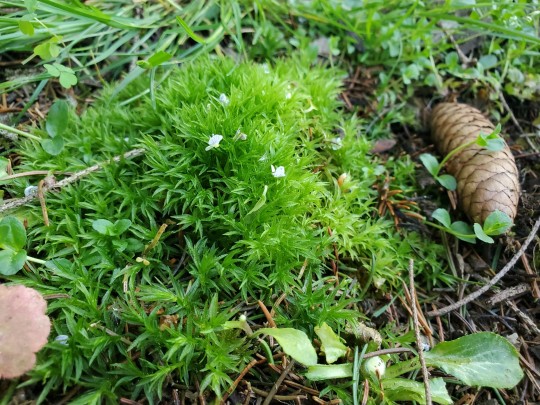


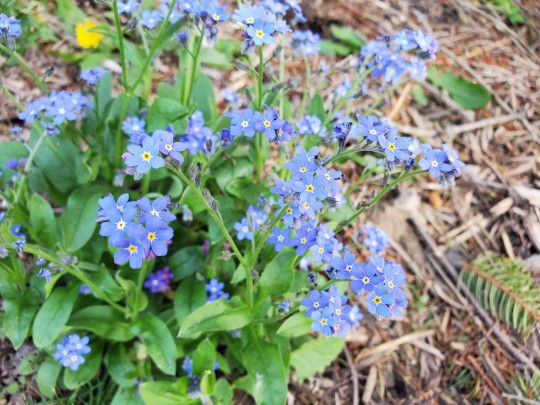

This is year three of my front perennial bed and it's still coming into its own and is a bit more of a botanical garden than anything planned or coordinated as far as height, bloom time, or organization goes, but!!! It was bare grass up to the foundation just three springs ago.
Blooming right now: woodland poppy, tiarella, brunnera, newly-planted ground orchid, and forget me nots
36 notes
·
View notes
Text


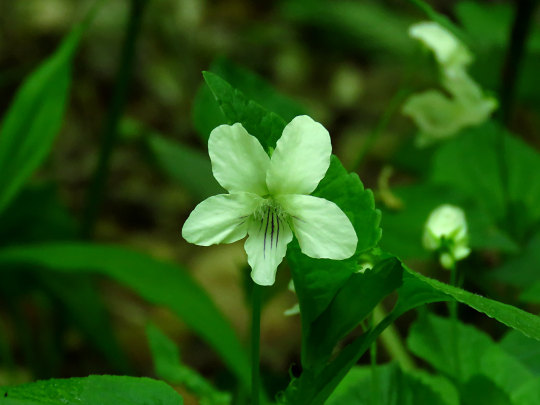
Seen along the Boston Run trail, Cuyahoga Valley National Park, Brecksville, Ohio (2) (3) by fractalv
Via Flickr:
(1) Erigeron philadelphicus (Philadelphia Fleabane)
(2) Tiarella cordifolia — foam-flower
(3) Striped White Violet; Viola striata
5 notes
·
View notes
Video
youtube
«Tiarella» RELAX ART THERAPY Bossa Nova improvisation piano composer Victor Mikhailovich Anokhin
#youtube#bossa nova#music viktor mikhailovich anokhin#new instrumental music#improvisation music#instrumental music#improvisation piano#favorites music#relaxing piano music#relax piano#relaxing music#relaxing videos#relaxing video#relax video music#romantic piano#romantic music#music of love#piano music#pianolove#piano improvisation#art therapy#musical journey#the beauty of nature#the world of flowers#flora and fauna#garden flowers#video music#youtube music#2023 music
3 notes
·
View notes
Photo



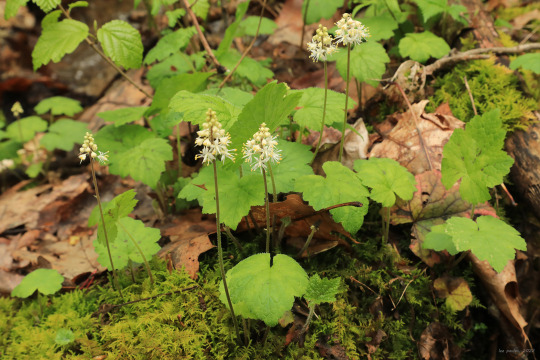

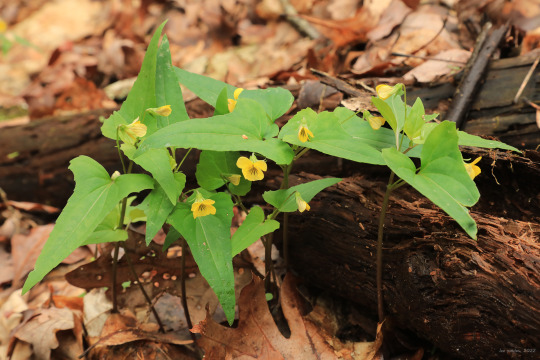
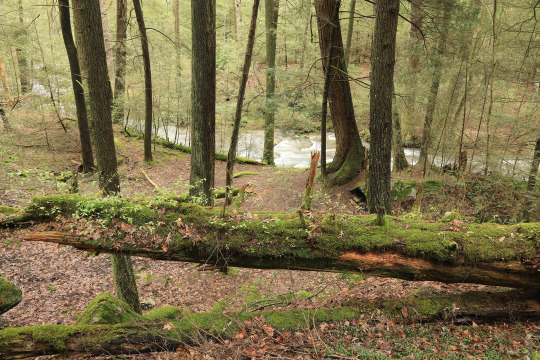

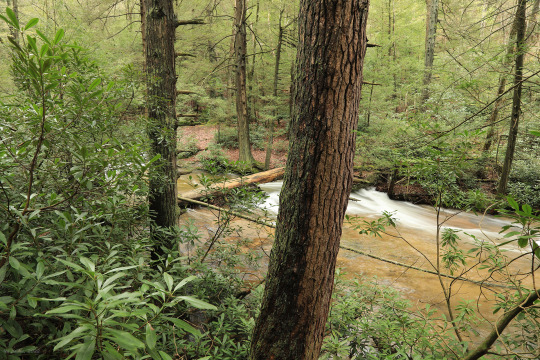

Eastern hemlock (Tsuga Canadensis) is sometimes referred to as the “redwood of the east”, and once-upon-a-time, this was absolutely the case; great expanses of virgin hemlock forest cooled headwater streams and created their own unique ecology. But these old growth forests are largely gone now, with only a few remnant stands scattered along the Appalachian spine. A spring hike through a pristine stand of these gentle giants is an experience to be treasured, providing a rare connection to a primeval world nearly lost to us.
From top: Painted trillium (Trillium undulatum), a lover of old hemlock and spruce forests and the most beautiful and delicate of all the trilliums to bloom in this area; marsh blue violet (Viola cucullata), a moisture-loving violet with club-like hairs at the throat of its flower; heartleaf foamflower (Tiarella cordifolia), which clumps gorgeously at the edges of seeps and brooks; halberd-leaved yellow violet (Viola hastata), an Appalachian endemic with sword-like leaves; and a red eft (Notophthalmus viridescens viridescens) on a perilous journey in search of a pond environment, where it will eventually transform into an adult newt.
#appalachia#vandalia#west virginia#spring#flora#wildflowers#coopers rock state forest#virgin hemlock trail#little laurel run#old growth forest#tsuga canadensis#eastern hemlock#trillium undulatum#painted trillium#painted lady#viola cucullata#marsh blue violet#tiarella cordifolia#heartleaf foamflower#viola hastata#halberd-leaved violet#halberd-leaved yellow violet#notophthalmus viridescens viridescens#eastern newt#red eft
178 notes
·
View notes
Photo

STARRY STARRY NIGHTS... TIARELLA by magda indigo https://flic.kr/p/2njtxgp
4 notes
·
View notes
Text
Ah depressed no reason to be, havent been reading only scrolling, wasted afternoon, back at the pit of despair tomorrow (despatch) endless.....a thousand veronicas, two thousand tiarellas, pluck pluck pluck, pick pick pick, pack pack pack and then saturday too
0 notes
Text
Harmony in Bloom: Pairing Royal Raindrops Crabapple with Complementary Plants
In the world of landscaping, few trees rival the stunning visual impact of the Royal Raindrops Crabapple. With its vibrant burgundy foliage and abundant blossoms, this ornamental tree can transform any garden into a breathtaking display of color and texture. Today, we explore the art of harmonizing this regal tree with complementary plants to create a garden symphony that resonates with beauty and balance.
Royal Raindrops Crabapple Overview
Before delving into ideal pairings, let's take a moment to appreciate the unique qualities of the Royal Raindrops Crabapple. Known scientifically as Malus 'Royal Raindrops,' this deciduous tree boasts deep red, cutleaf foliage that matures to a rich purple hue. In spring, the tree bursts into a profusion of deep pink to red blossoms, attracting pollinators and turning the garden into a visual spectacle.
Creating Contrast with Evergreens
One effective strategy for enhancing the visual impact of the Royal Raindrops Crabapple is to create contrast with evergreen companions. The year-round greenery of evergreen plants provides a stunning backdrop that allows the striking features of the crabapple to stand out.
Consider pairing your Royal Raindrops Crabapple with low-maintenance evergreens like Boxwoods (Buxus spp.) or Japanese Holly (Ilex crenata). Their glossy green leaves provide a perfect canvas for the Royal Raindrops' burgundy foliage and ensure a vibrant display even in the winter months.
Seasonal Drama with Spring Blooms
To maximize the visual interest throughout the growing season, strategically plant perennials and shrubs that bloom in tandem with the Royal Raindrops Crabapple in spring. This creates a dynamic landscape that evolves with the changing seasons.
Celebrate spring with the delicate blooms of Bleeding Heart (Dicentra spectabilis) or the vibrant hues of Coral Bells (Heuchera spp.). These plants not only complement the crabapple's blossoms but also extend the period of color in your garden.
Understory Planting for Ground-Level Appeal
Enhance the vertical dimension of your garden by incorporating low-growing plants beneath the Royal Raindrops Crabapple. This understory planting not only adds visual interest but also helps in weed suppression and moisture retention.
Opt for groundcovers like Creeping Jenny (Lysimachia nummularia) or Foamflower (Tiarella cordifolia). Their spreading habit and contrasting foliage provide a lush carpet that beautifully contrasts with the crabapple's upright structure.
Fragrance and Texture with Companion Shrubs
Extend the sensory experience in your garden by including fragrant and textural companion shrubs that harmonize with the Royal Raindrops Crabapple. These shrubs add depth and diversity to your planting scheme.
Lilacs (Syringa spp.) or Viburnums (Viburnum spp.) are excellent choices, offering fragrant blooms and appealing textures. Their presence enhances the overall garden ambiance while complementing the Royal Raindrops' majestic appearance.
A Symphony of Colors and Textures with Royal Raindrops Crabapple
In conclusion, the Royal Raindrops Crabapple is not just a tree; it's a centerpiece for creating a symphony of colors and textures in your garden. By carefully selecting complementary plants that span seasons and dimensions, you can elevate the visual appeal of your outdoor space to new heights.

0 notes
Photo

From last year… Tiarella, known also as Foamflower, this variety is Pink Skyrocket. It looks very much like a pink rocket. According to a few articles I’ve read, it shouldn’t be in flower until March or April. It’s a dainty little thing. Four things to bear in mind… • Protect from excessive winter wet. • Best in shade. • Divide in spring. • Put up a sign warning slugs to stay away. This year, it’s looking miserable. Just goes to show, garden centres have them looking their best in order to sell them. I’ll divide this over the next few days and pop an update here towards the end of March https://www.instagram.com/p/Cosxv8UtBRw/?igshid=NGJjMDIxMWI=
0 notes